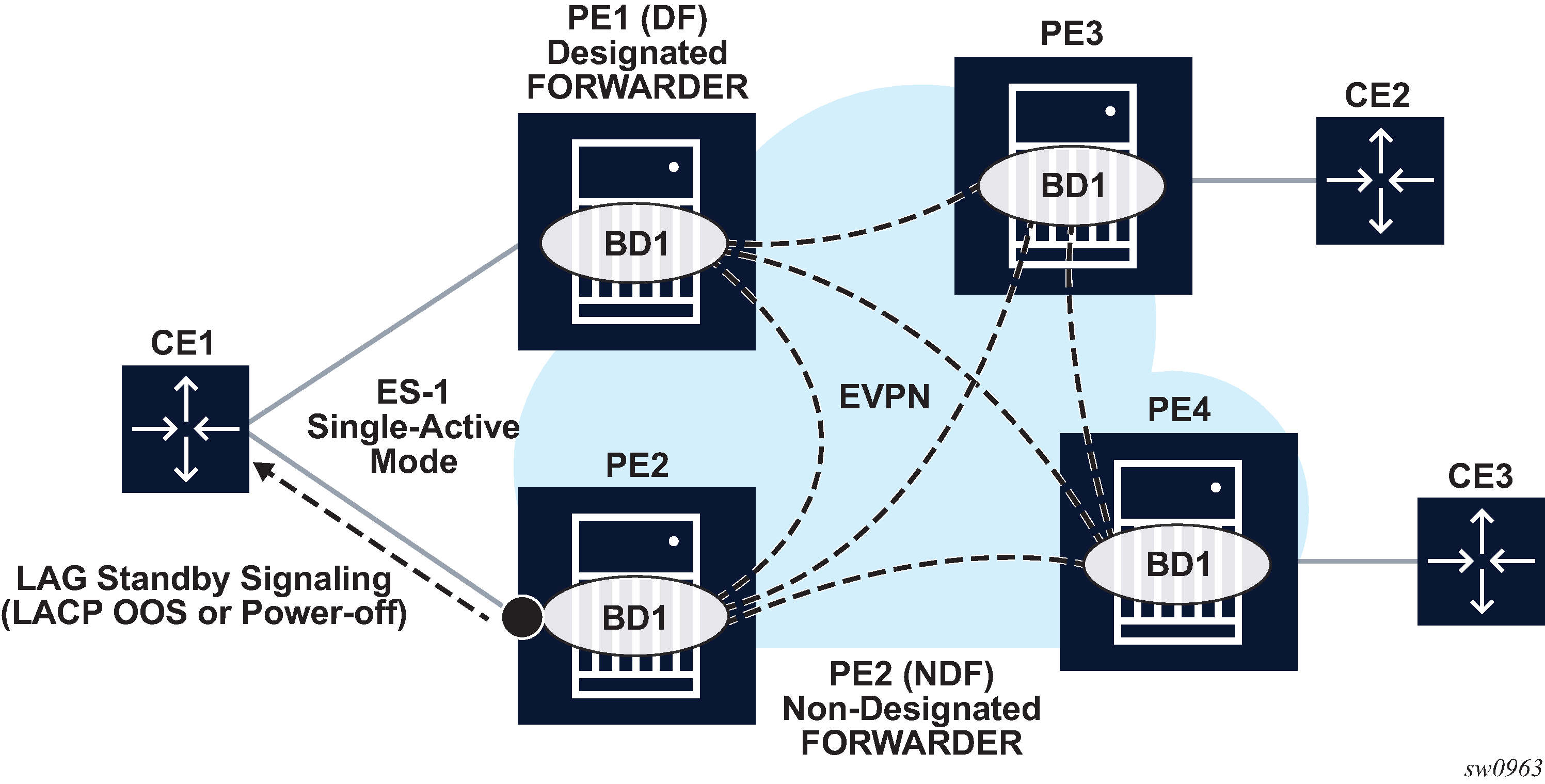As described in EVPN for MPLS tunnels, EVPN single-active multihoming PEs that are elected as non-DF must notify their attached CEs so the CE does not send traffic to the non-DF PE. This can be performed on a per-service basis that is based on the ETH-CFM and fault-propagation. However, sometimes ETH-CFM is not supported in multihomed CEs and other notification mechanisms are needed, such as LACP standby or power-off. This scenario is illustrated in Figure: LACP standby signaling from the non-DF.

Based on Figure: LACP standby signaling from the non-DF, the multihomed PEs is configured with multiple EVPN services that use ES-1. ES-1 and its associated LAG is configured as follows:
*[ex:configure lag 1]
A:admin@PE-2# info
admin-state enable
standby-signaling {power-off|lacp}
monitor-oper-group ”DF-signal-1"
mode access
port 1/1/c2/1 {
}
<snip>
ex:configure service system bgp evpn]
A:admin@PE-2# info
ethernet-segment "ES-1" {
admin-state enable
esi 0x01010000000000000000
multi-homing-mode single-active
oper-group ‟DF-signal-1”
association {
lag 1 {
}
<snip>
When the oper-group is configured on the ES and monitored on the associated LAG:
The oper-group status is driven by the ES DF status (defined by the number of DF SAPs or oper-up SAPs owned by the ES).
The oper-group goes down if all the SAPs in the ES go down (this happens in PE2 in Figure: LACP standby signaling from the non-DF). The ES oper-group goes up when at least one SAP in the ES goes up.
As a result, if PE2 becomes non-DF on all the SAPs in the ES, they all go oper-down, including the ES-1 oper-group.
Because LAG-1 is monitoring the oper-group, when its status goes down, LAG-1 signals LAG standby state to the CE. The standby signaling can be configured as LACP or power-off.
The ES and AD routes for the ES are not withdrawn because the router recognizes that the LAG becomes standby for the ES oper-group.
Oper-groups cannot be assigned to ESs that are configured as virtual, all-active or service-carving mode auto.